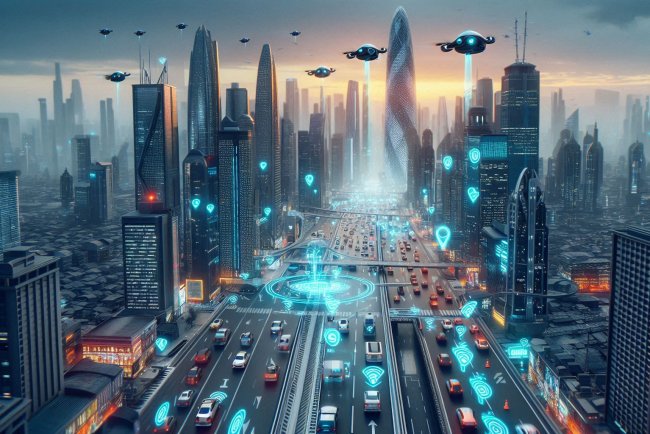Smart Agriculture: Technology in Farming and Food Production
Discover how technology is revolutionizing agriculture with smart farming solutions to increase efficiency and sustainability in food production.

Smart Agriculture: Technology in Farming and Food Production
Smart agriculture, also known as precision agriculture, involves the use of technology to optimize and improve agricultural practices. By leveraging various technologies such as sensors, drones, artificial intelligence, and data analytics, farmers can make more informed decisions, increase efficiency, and reduce waste in farming and food production.
Benefits of Smart Agriculture
There are several benefits of implementing smart agriculture practices:
- Increased Efficiency: Smart agriculture technologies help farmers optimize resource use, such as water and fertilizers, leading to increased efficiency in crop production.
- Improved Yield: By monitoring crop health and environmental conditions in real-time, farmers can take proactive measures to prevent diseases and pests, resulting in improved yield and quality of produce.
- Reduced Environmental Impact: Smart agriculture promotes sustainable farming practices by minimizing the use of chemicals and water, reducing greenhouse gas emissions, and preserving natural resources.
- Cost Savings: By automating tasks and optimizing inputs, farmers can reduce operational costs and improve overall profitability.
- Data-Driven Decision Making: Smart agriculture relies on data analytics to provide insights into crop performance, soil health, weather patterns, and market trends, enabling farmers to make informed decisions.
Key Technologies in Smart Agriculture
Several technologies play a crucial role in enabling smart agriculture:
- Sensors: Sensors are used to monitor various parameters such as soil moisture, temperature, and nutrient levels, providing real-time data for better decision-making.
- Drones: Drones equipped with cameras and sensors can capture aerial images of fields, helping farmers assess crop health, detect pests, and monitor field conditions with precision.
- Internet of Things (IoT): IoT devices enable connectivity and data exchange between different agricultural equipment and systems, facilitating remote monitoring and control of farm operations.
- Artificial Intelligence (AI): AI algorithms can analyze large datasets to predict crop yields, optimize planting patterns, and identify anomalies or diseases in crops, enhancing overall productivity.
- Robotics: Robotic systems can automate tasks such as planting, weeding, and harvesting, reducing labor requirements and improving efficiency on the farm.
Challenges and Future Trends
While smart agriculture offers numerous benefits, there are also challenges that need to be addressed, such as high initial costs, data privacy concerns, and limited access to technology in rural areas. However, advancements in technology and increasing awareness of sustainable farming practices are driving the adoption of smart agriculture worldwide.
Future trends in smart agriculture include the integration of advanced technologies such as blockchain for traceability and supply chain management, the use of drones for precision spraying and monitoring, and the development of autonomous vehicles for farming operations. Additionally, the application of big data analytics and machine learning will further enhance decision-making and productivity in agriculture.
Conclusion
Smart agriculture is revolutionizing the way farming and food production are conducted, enabling farmers to optimize resources, increase productivity, and reduce environmental impact. By embracing technology and data-driven solutions, the agriculture industry can address global challenges such as feeding a growing population, climate change, and sustainability.
As smart agriculture continues to evolve, it is essential for farmers, policymakers, and stakeholders to collaborate and invest in innovative technologies that promote sustainable and efficient farming practices for a more food-secure future.
What's Your Reaction?

















